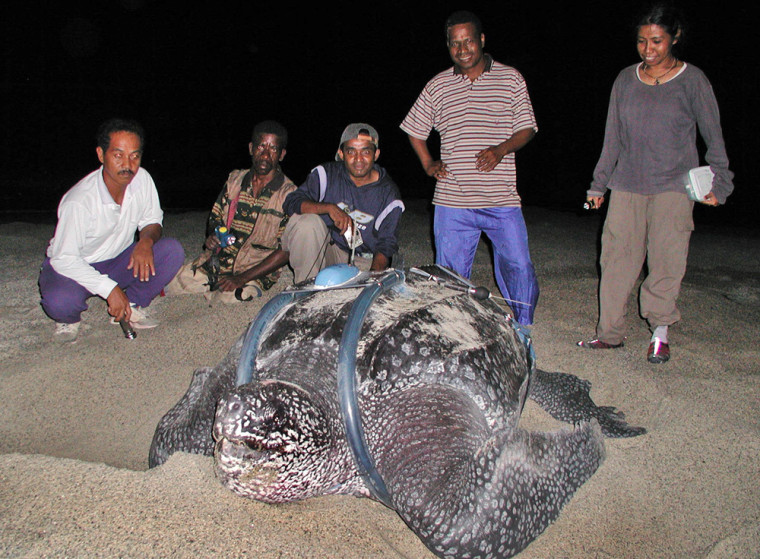Scientists tracked a leatherback turtle that swam from Indonesia to Oregon and back to Hawaii in an epic 13,000-mile search for food — research they hope will boost international efforts to save the endangered species.
Leatherbacks, which can grow up to 9 feet in length, have roamed the oceans for 100 million years. But researchers at the U.S. National Marine Fisheries Service in California say commercial fishing presents too many dangers for the globe-trotting sea turtles, which face extinction if no action is taken.
"Migrations of this magnitude expose animals to a multitude of risks from fisheries on the high seas," Scott Benson and Peter Dutton, scientists with the service, co-wrote in a paper last month in the peer-reviewed Chelonian Conservation and Biology.
The leatherback is the world's most endangered sea turtle. In a telephone interview Friday, Benson estimated that less than 5,000 adult females now live in the Pacific region. Males cannot be easily counted because they do not come ashore. Conservationists estimate the breed could become extinct within 30 years.
Turtles "face a myriad of risks from things like ingesting debris like plastic, to traveling through areas that are used by multinational fisheries — fisheries that would catch (the turtles) in the course of trying to catch fish," Benson said.
Benson and Dutton went to Indonesia in 2001 hoping to track some turtles using satellite transmitters, confirm their trans-Pacific route and prompt action to prevent their extinction. Their research showed the animals ranged from the South China Sea to the Sea of Japan and the North Pacific.
One adult female began her journey in 2003 on a nesting beach in Jamursbamedi in Papua province, Benson said. He and Dutton tracked the leatherback and her hunt for food for 647 days until the transmitter's battery ran out just off Hawaii. During her travels she swam as far north as Oregon.
"It's the old adage of not putting all your eggs in one basket," Benson said. "If a foraging ground was bad one year, maybe another foraging ground would be good. Some portion of the population would always be able to find food."
Peter C.H. Pritchard, a turtle expert and director of the Chelonian Research Institute in Florida, said he wasn't surprised to learn how far the turtle traveled.
"It's possible and only limited by the geography of the world," Pritchard said Friday. "They are masters of the ocean. There is a tremendous amount of muscle in the front. This is a powerful fishing machine and remarkable diving machine."
Benson called for action to protect leatherback turtles as they roam the seas.
"It will be the responsibility of many countries to ensure the species survives in the Pacific Ocean for future generations," he said. "It's an animal that doesn't recognize international boundaries. You can protect the nesting beaches but if you can't protect the animal in the water, you haven't done anything."
